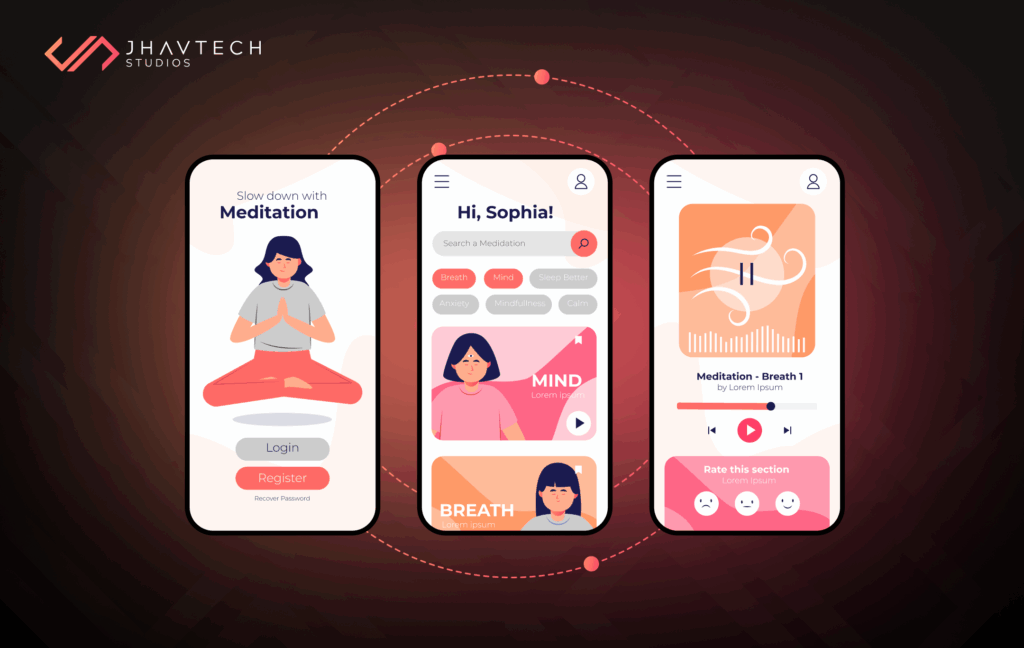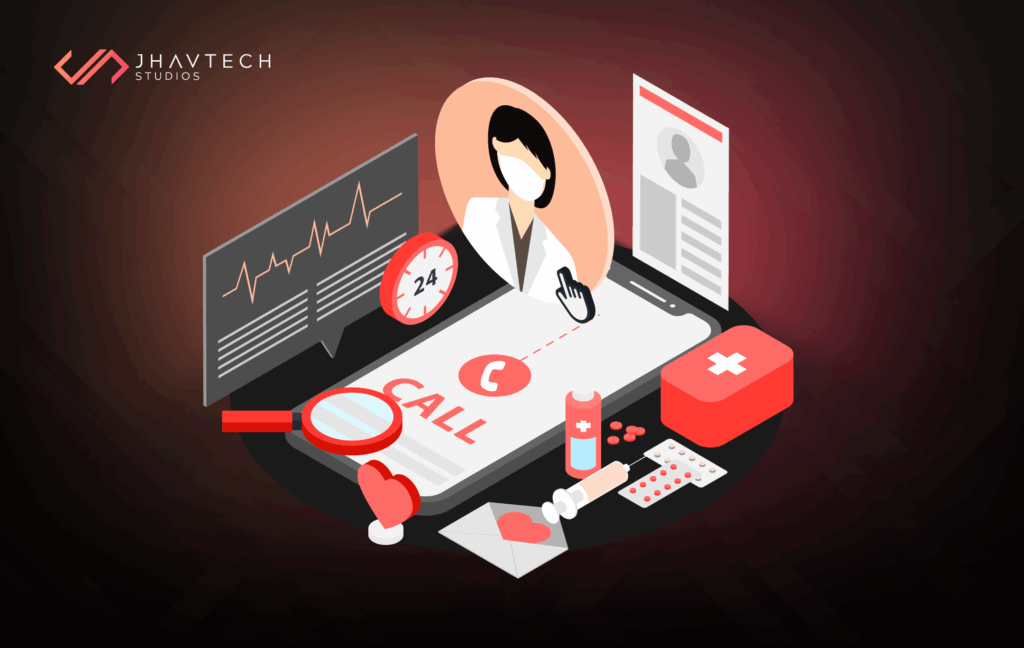Top 10 Healthcare App Ideas That Are Disrupting the Medical Industry in 2025
 Jason Castillo
Jason Castillo
Let’s be real — if your healthcare business still doesn’t have a mobile app, you’re leaving both impact and revenue on the table.
From virtual GP appointments to on-demand medication delivery, healthcare apps have evolved from luxury tools into everyday necessities. And in 2025, with artificial intelligence, wearable tech, and remote care reshaping patient expectations, there’s never been a better time to dive into digital health innovation.
Whether you’re an executive in a hospital group, a medtech startup founder, or an investor scoping out the next unicorn, this list of healthcare app ideas is your blueprint for success. These ideas aren’t just trendy — they’re reshaping how care is delivered, especially across Australia’s unique healthcare landscape.
Let’s explore the top 10 healthcare app ideas shaking up Australia’s medical industry in 2025.
Why Healthcare Apps Are Booming in 2025
The global healthcare app market is expected to hit USD 370.1 billion by 2030, according to Grand View Research. Closer to home, Australia’s Digital Health Agency continues to champion innovation, with My Health Record integration and telehealth services seeing record adoption post-pandemic.
Here’s why the market is on fire:
- Convenience wins – Patients expect on-demand access to healthcare services from their phones.
- Aging populations – Australia’s 65+ age group is projected to double by 2060. Apps for chronic care and monitoring are in demand.
- Wearables + AI = 🔥 – Real-time data from Apple Watches, Fitbits, and even smart clothing is helping detect issues earlier.
- COVID-19’s legacy – Telehealth isn’t a trend. It’s the new normal.
And as these healthcare app ideas continue to evolve, they’re not just enhancing convenience — they’re improving lives.
AI-Powered Symptom Checker App
What it does:
Lets users input symptoms and receive a list of possible conditions or next steps based on AI-driven pattern recognition.
Why it’s relevant in 2025:
Large Language Models (LLMs) are now smart enough to distinguish between a harmless cold and early-stage pneumonia. In Australia, rural populations especially benefit by using these web apps and mobile applications to reduce unnecessary travel or emergency visits.
Target Users:
General public, rural residents, and health-conscious users.
Example:
Ada Health is already making waves globally. A local version built for Australia’s unique health concerns (e.g., bushfire smoke effects or skin cancer symptoms) would be a hit.
Mental Health & Wellness Companion
What it does:
Combines mindfulness tools, CBT programs, live chat therapy, and emotional tracking—all in one app.
2025 Feature Highlight:
Integration with smartwatches to detect stress levels through biometrics like heart rate variability and breathing patterns.
Why it’s booming:
Anxiety and depression levels in Australia spiked by 16% post-pandemic, according to the ABS. Gen Z, in particular, is turning to apps over traditional therapy.
Real-world case:
Apps like Headspace and Calm paved the way, but an Australian-focused platform with local therapists and Medicare support would disrupt the space.
Mental health-focused healthcare app ideas are not just impactful — they’re urgent.

Women’s Health & Fertility Tracker
What it does:
Tracks menstrual cycles, fertility windows, ovulation, pregnancy progress, and postpartum recovery.
Next-gen features:
AI chatbot for real-time Q&A
Predictive fertility insights
Access to online support communities
Why it’s a standout idea:
With a growing push for personalized women’s health tools, combining education, tracking, and virtual care in one place fills a huge gap in Australia’s femtech market. Clean, intuitive UI/UX design is also critical here — women expect a safe, welcoming, and easy-to-navigate digital space when dealing with deeply personal health matters.
Example to emulate:
Clue and Flo lead the global market—but lack localized data or integration with Medicare-funded women’s health services.
Among the most promising healthcare app ideas, this category serves a passionate, underserved, and growing user base.
Chronic Condition Management App
Focus areas:
Diabetes, hypertension, asthma, cardiovascular disease—conditions affecting millions of Australians.
Why it’s game-changing:
Imagine an app that connects with your glucometer, pings your GP if readings go wild, and reminds you to take your meds on time.
Bonus features:
Diet and lifestyle recommendations
Medication schedule with push notifications
Personalized health reports and progress tracking
Real-world impact:
A study by the University of Sydney showed digital self-management tools reduced hospital admissions for chronic patients by 22%.
For patients and caregivers alike, these healthcare app ideas empower better day-to-day living.
Telemedicine & Virtual Consultation Platform
What it does:
Allows patients to book appointments, attend video calls, get prescriptions, and receive health reports—all without leaving their home.
2025 Innovations:
AR diagnostics to simulate physical check-ups
Real-time AI language translation for multicultural consultations
EHR (Electronic Health Record) sync for seamless care
Why it’s crucial:
Over 37% of GP consultations in Australia are now conducted via telehealth. In remote communities and busy cities alike, virtual care is more than convenient—it’s essential.
Looking at scalable healthcare app ideas, this one remains a favorite for hospitals and startups alike.
Elderly Care and Remote Monitoring App
What it includes:
Fall detection through smart wearables
Medication and vitals tracking
Emergency SOS and geofencing alerts
Caregiver dashboards for family members
Why it matters in Australia:
With more than 4.4 million Australians aged 65+, families are looking for smart ways to ensure their loved ones are safe and healthy—even from a distance.
💡 Bonus idea:
Integrate with aged care facilities or in-home services for proactive care coordination.
These elder-focused healthcare app ideas are not only useful — they’re becoming non-negotiable in aged care planning.
Medicine Delivery and Pharmacy Apps
How it works:
Users upload their prescriptions, order refills, track deliveries, and get automated alerts when it’s time to reorder.
2025 Upgrades:
AI-powered dosage reminders
Blockchain-enabled verification to combat counterfeit drugs
Doctor-approved ordering synced with EHRs
Why it’s hot:
With the rise of home-based care and teleconsultations, the logical next step is seamless medicine delivery—especially for elderly or disabled patients.
Local opportunity:
Few apps cater to both prescription and over-the-counter needs while integrating with Australian pharmacies or My Health Record systems.
It’s one of the most commercially viable healthcare app ideas in the pharmacy tech space.

Healthcare Worker Scheduling and Shift Management App
Target users:
Hospitals, aged care facilities, allied health clinics
Key features:
Smart shift swapping
Automated payroll and attendance tracking
In-app announcements and secure messaging
Why it’s in demand:
Australia is facing a significant healthcare workforce shortage, especially in nursing. Making rostering smarter and easier is critical to staff wellbeing and patient care.
Real-world scenario:
Apps like Deputy dominate general scheduling, but industry-specific versions with credential checks or training reminders would serve medical staff better.
From operational to clinical teams, these healthcare app ideas make a measurable difference.
Fitness and Rehab Tracking App (Post-Surgery or Injury)
What it does:
Guides users through recovery exercises and physiotherapy, tracks progress, and shares insights with their doctors or therapists.
Trending in 2025:
Gamified rehab routines
AI-generated routines based on surgery type
Virtual PT check-ins with motion tracking
Why it matters:
After surgery, many Australians rely on public hospital rehab programs, which can be delayed. A mobile-first solution bridges the gap and gets patients moving sooner.
💡 Bonus tip:
Partner with National Disability Insurance Scheme (NDIS) providers or private clinics for B2B opportunities.
Among the most practical healthcare app ideas, this one supports long-term recovery and patient independence.
Medical Education and Simulation App
Audience:
Medical students, nursing trainees, first responders
Use Cases:
3D anatomy models for hands-on learning
AR-based surgery practice
Quizzes, certification prep, and interactive case studies
Why it’s thriving:
As Australia embraces hybrid learning, apps that enhance practical skills are essential. Simulation-based training has been shown to improve learning outcomes by 30%.
Example to learn from:
Touch Surgery is making global headlines. A region-specific version aligned with Australian medical standards would find immediate users in unis and TAFEs.
These learning-centric healthcare app ideas are building the future of Australian medicine, one simulation at a time.
Features to Prioritize in Healthcare Apps
Whether you’re building one of these healthcare app ideas or something entirely new, these features are must-haves:
HIPAA/GDPR compliance – Yes, even in Australia, privacy laws like the Privacy Act 1988 demand robust data protection.
End-to-end encryption – Especially vital in mental health and telehealth apps.
Multi-platform support – Whether iOS or Android — your app should live everywhere patients do.
Offline access – Crucial for rural or remote Australian users with unreliable internet.
Analytics dashboard – Give patients and doctors actionable insights from health data.
Tech Stack Suggestions for Scalable Apps
Here’s what we recommend at Jhavtech Studios:
- Frontend: React Native, Flutter — excellent frameworks for native or hybrid app development that ensure performance across both iOS and Android platforms.
- Backend: Node.js or Django (secure and scalable)
- Database: PostgreSQL or MongoDB
- Cloud: AWS, Azure for HIPAA-ready infrastructure
- APIs: Twilio (chat), Stripe (payments), Fitbit (wearables), Medicare-integrated systems
Monetization Models for Healthcare Apps

Things to Avoid When Building a Healthcare App
- Ignoring user personas: Build for real users — patients, doctors, carers.
- Rushing the launch: Security, compliance, and usability testing are non-negotiable.
- Feature overload: A cluttered app is an unused app.
- Skipping legal checks: Non-compliance with Australian health regulations can cost you millions.
Why Healthcare Startups & Hospitals Choose Jhavtech Studios
We don’t just build apps—we deliver end-to-end custom software solutions that create digital health ecosystems and solve real-world problems.
Why partner with us?
Over a decade of healthcare app development experience
HIPAA/GDPR-compliant systems built with privacy in mind
Intuitive UI/UX that patients and practitioners actually enjoy using
Experience integrating wearables, AI, and secure APIs
Clients across hospitals, clinics, and government health orgs in Australia
Final Thoughts…
2025 is the year of intelligent, inclusive, and impactful healthcare tech. Whether it’s improving chronic disease outcomes, streamlining hospital operations, or helping Aussies stay healthy from home, mobile apps are leading the charge.
Looking to bring one of these healthcare app ideas to life? Partner with a team that understands both the tech and the care behind the code. Contact us today! We’re here to help turn your vision into a digital product that changes lives — and grows your business
Frequently Asked Questions (FAQs)
1. How much does it cost to build a healthcare app?
It depends on the features, compliance scope, and integrations. A basic app might start at AUD $30,000, while enterprise-grade solutions go much higher.
2. Is cloud storage safe for patient data?
Yes — with end-to-end encryption, access controls, and Australian Privacy Act compliance, cloud storage is both safe and scalable.
3. Can I integrate my app with hospital systems?
Absolutely. With HL7, FHIR standards, and smart APIs, integration with existing EHRs and scheduling systems is seamless.
4. What platforms should my app support?
For maximum reach: Android, iOS, and web. Multi-platform support is essential, especially in diverse user bases.
5. How do I validate my healthcare app idea?
Start with a discovery workshop, map your user journey, build a clickable prototype — and test it with real users. We can guide you through each step as you evaluate your healthcare app ideas.
Subscribe to my newsletter
Read articles from Jason Castillo directly inside your inbox. Subscribe to the newsletter, and don't miss out.
Written by

Jason Castillo
Jason Castillo
Helping businesses—from startups to enterprises—build and rescue apps and websites at Jhavtech Studios. We transform stalled or messy software projects into clean, scalable digital solutions. Passionate about solving complex tech challenges and bringing great ideas to life.